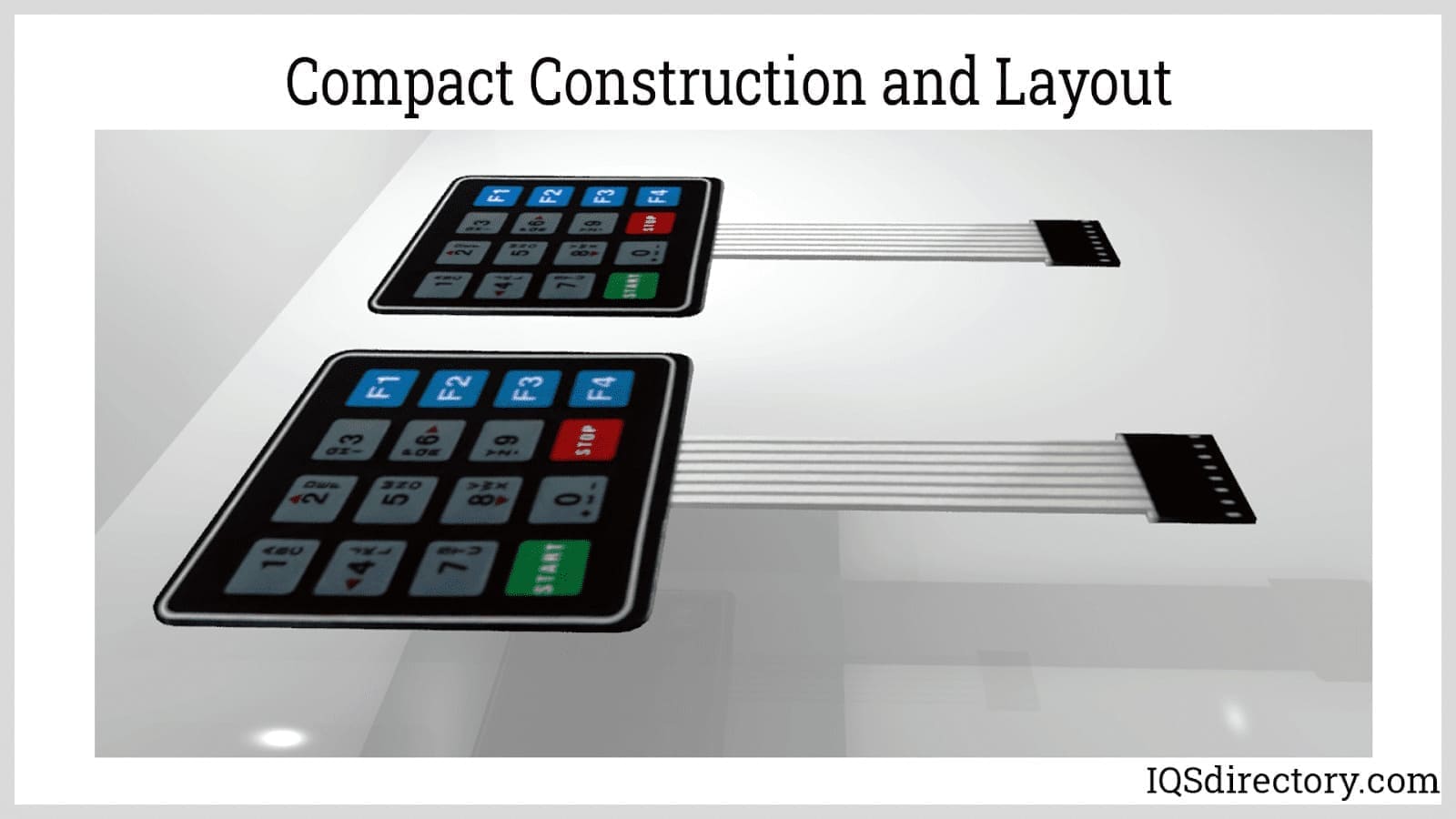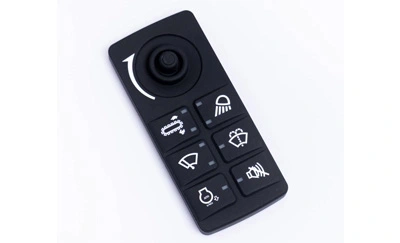How membrane switch is revolutionizing user interaction in medical devices
The Manufacturing Refine Behind Membrane Switch Over: What You Need to Know
The production process behind membrane layer switches combines mindful design, product selection, and quality assurance. It begins with recognizing the complexities of membrane layer switch layout and progresses via various phases, consisting of material selections and printing techniques. Each stage plays an important duty in guaranteeing capability and longevity. Nevertheless, the intricacies of layer building and the strenuous testing requirements might reveal insights that are not quickly obvious. What lies beyond these fundamental components?
Understanding Membrane Change Style
Membrane layer buttons might show up simple at first glance, their style entails complex factors to consider that guarantee functionality and sturdiness. The style procedure starts with a thorough understanding of user requirements, including the interface's intended application and environmental factors. Ergonomics is a crucial element, as the design should help with ease of use while ensuring that tactile responses fulfills user expectations.Moreover, the layering of components, such as graphic overlays, adhesive layers, and conductive traces, have to be precisely engineered. membrane switch. This split arrangement not just influences the switch's responsiveness but additionally influences its durability. Interest is offered to the securing strategies used to shield against moisture and dirt, which can jeopardize performance. In addition, layout considerations include looks, where color pattern and aesthetic clearness enhance user experience. Inevitably, the style of membrane layer switches over balances functionality, customer experience, and toughness, guaranteeing that they meet the needs of various applications properly
Materials Made Use Of in Membrane Switch Over Manufacturing
When picking materials for membrane layer switch production, it is necessary to consider both performance and toughness. The primary products include polyester and polycarbonate movies, which provide adaptability and stamina. These movies are frequently covered with adhesive to ensure proper bonding to substrates. Conductive inks, typically composed of silver or carbon, are critical for producing electric connections within the switch, permitting reputable operation.Additionally, a safety layer, such as a hard coat, is regularly related to improve scrape resistance and longevity. The option of backing product, such as acrylic or foam, can considerably impact the button's responsive feeling and total user experience. Moreover, numerous environmental factors, consisting of temperature and moisture, ought to guide product option to guarantee peak performance in certain applications. Inevitably, the right combination of materials adds to the membrane layer button's capability and life-span, making educated choices necessary for suppliers.
The Printing Refine: Creating Video and Text
The printing procedure in membrane layer button production plays a substantial role in producing premium graphics and message. Different graphic style techniques are employed to guarantee visual charm and functionality, while careful ink selection methods are essential for resilience and performance. Recognizing these elements is fundamental for attaining ideal lead to membrane switch layout.
Graphic Layout Techniques
Graphic style methods play a vital role in the printing procedure of membrane buttons, as they define how graphics and message will inevitably show up on the final item. Efficient visuals style involves the calculated use of colors, typefaces, and designs to enhance readability and visual allure. Developers commonly utilize vector graphics for scalability, making certain that pictures continue to be sharp at various dimensions. In addition, interest to comparison and positioning is vital, as it affects customer interaction and visual top quality. The consolidation of branding components, such as logos, need to be handled with care to keep brand name integrity. Generally, thoughtful visuals design methods add significantly to the functionality and good looks of membrane switches, influencing customer experience and product performance.
Ink Choice Approaches
Picking the suitable ink is necessary for attaining the desired visual high quality and toughness in membrane layer button production. Various ink types are used, including solvent-based, water-based, and UV-curable inks. Each type uses distinctive features, such as adhesion, flexibility, and resistance to ecological elements. Solvent-based inks are typically preferred for their toughness and vivid shades, while water-based inks are a lot more ecologically friendly however may have limitations in adhesion. UV-curable inks provide quick healing and durable efficiency. Furthermore, color matching techniques guarantee that the selected inks straighten with layout specs. Eventually, the choice of ink must consider variables such as application approach, substratum compatibility, and end-use demands to achieve superior outcomes in membrane button graphics and text.
Layer Construction and Assembly

Material Selection Process
A careful choice of materials is vital in the production procedure of membrane layer buttons, as it straight affects performance and toughness. The key products made use of consist of polyester, polycarbonate, and different conductive inks. Polyester is commonly preferred for its exceptional resistance to chemicals and abrasion, making it ideal for extreme settings. Polycarbonate, on the various other hand, supplies remarkable clearness and effect resistance, which is useful for applications needing visibility and robustness. Conductive inks, typically made up of silver or carbon, are essential for developing trustworthy electric pathways. Additionally, the selection of adhesive materials influences the general stability of the switch - membrane switch. Assessing elements such as environmental direct exposure, responsive feedback, and visual needs guides manufacturers in picking the ideal materials for their specific applications
Layer Attachment Methods
Adhering layers in membrane layer switch construction is an essential procedure that guarantees capability and durability. Various attachment techniques are used to protect perfect bonding in between layers, which usually include making use of adhesives, heat, and stress. Pressure-sensitive adhesives (PSAs) are typically made use of for their ease of application and prompt bonding abilities. Additionally, thermal bonding techniques can be used, where heat is utilized to activate sticky homes, securing a strong bond. The selection of adhesion technique largely depends upon the products involved and the certain application requirements of the membrane button. Proper positioning and consistent application of adhesives are vital to protect against problems, protecting the button operates successfully throughout its desired lifespan.
Quality Assurance Actions
Guaranteeing high quality control throughout the layer construction and assembly of membrane buttons is crucial for maintaining performance and dependability. This procedure typically involves a number of essential measures, including complete examinations at each phase of production. Producers use sophisticated screening approaches, such as peel examinations and attachment analyses, to validate the integrity of layer bonds. Additionally, visual evaluations are carried out to determine any type of defects in printing or material disparities. Environmental conditions, such as temperature and moisture, are carefully kept track of to guarantee perfect curing and adhesion. Furthermore, regular calibration of equipment aids keep specific production criteria. By carrying out these high quality control steps, producers can greatly reduce the threat of item failure, guaranteeing that the last membrane layer changes meet the called for specs and client expectations.
Examining and Quality Assurance Steps

Technologies in Membrane Switch Modern Technology
As improvements in technology proceed to progress, membrane buttons use this link are taking advantage of cutting-edge advancements that enhance their capability and individual experience. One notable advancement is the integration of capacitive touch modern technology, which enables for even more user-friendly and receptive individual interfaces. This change not only boosts appearances however additionally decreases mechanical damage, prolonging the life-span of the switches.Additionally, developments in visuals overlay materials have brought about enhanced durability and resistance to environmental variables such as moisture and UV light. These products currently offer improved quality and brightness, additional boosting the visual appeal.Furthermore, the consolidation of clever technology is changing membrane layer switches into interactive control board, making it possible for connectivity with IoT gadgets. This connection cultivates a seamless user experience, leading the way for applications in numerous industries, from health care to customer electronic devices. Collectively, these developments setting membrane layer switches over as crucial elements in contemporary tool design.
Frequently Asked Concerns
For how long Does the Membrane Layer Switch Manufacturing Process Take?
The duration of the membrane layer button production procedure can differ considerably. Elements such as complexity, materials used, and production volume influence timelines, with common manufacturing varying from a couple of days to a number of weeks for conclusion.
What Are the Typical Applications for Membrane Layer Switches?
Membrane switches are typically used in different industries, including automotive controls, household appliances, clinical tools, and customer electronic devices (membrane switch). Their versatility and toughness make them excellent for applications needing easy to use user interfaces and trusted performance in varied atmospheres
Can Membrane Switches Over Be Personalized for Specific Requirements?

What Is the Life-span of a Typical Membrane Switch?
The life expectancy of a regular membrane layer button differs, but generally, it varies from 1 to 5 million cycles. Elements such as usage, atmosphere, and worldly high quality substantially affect durability and overall performance over time.

Are Membrane Switches Environmentally Pleasant?
The environmental kindness of membrane layer changes varies. Some materials made use of might not be recyclable, while others can be green. The general effect depends on making techniques and products, demanding cautious consideration throughout option and disposal. The manufacturing process behind membrane layer changes combines careful layout, product selection, and top quality control. It starts with understanding the intricacies of membrane layer switch layout and advances through numerous stages, consisting of product choices and printing strategies. When choosing products for membrane layer switch production, it is important to ponder both performance and resilience. A mindful selection of products is vital in the manufacturing process of membrane layer switches, as it straight influences capability and sturdiness. The selection of bond approach Source mostly depends on the products involved and the details application requirements of the membrane layer switch.